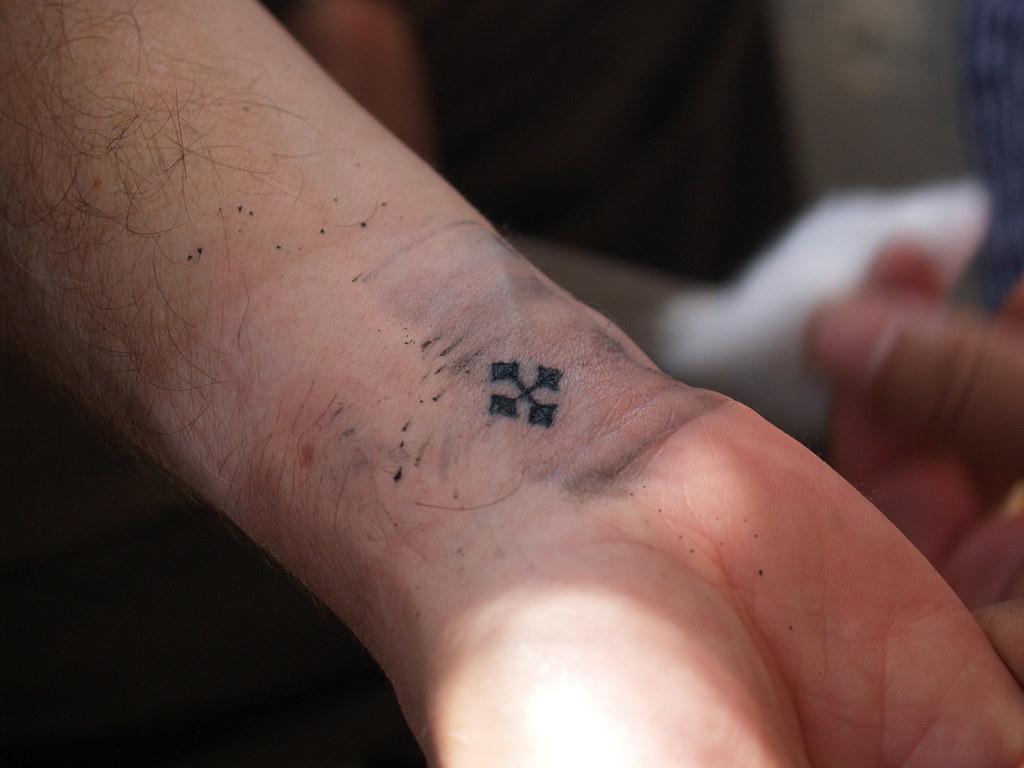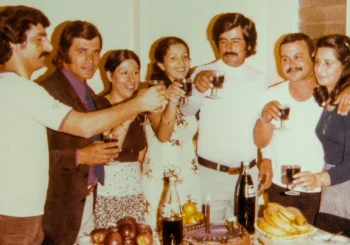Drawn with grace and simplicity, the Coptic cross tattoo tells stories of faith, resistance, and tradition, worldwide, but particularly in Egypt. Modern-day tattoos are celebrated and adorned, but for the once embatalled Coptic Christian community in Egypt, tattoos were a defiant mark of their faith.
The process of tattooing among Egyptians is an ancient tradition that dates back to the Coptic period of Egypt. The Coptic Orthodox Church in Egypt is one of the oldest Christian churches in the world. When Egypt was conquered by Muslims around 640 AD and placed under Islamic control, the practice of tattooing increased dramatically, according to the Coptic Church of Archangel Michael and St. Tekla. The people were forced to convert to Islam, and those who did not were marked with a cross on their wrist – and forced to pay a religious tax.
“Getting the cross tattooed on our wrists was a sign of symbolism and endurance. The cross signifies our history in Egypt and reminds us of our past and present,” says Mona Ibrahim, a Coptic christian living in Egypt.
The practice is thus deeply embedded in a historical, cultural, and political context in Egypt. It became the symbol of radical expression and faithfulness in the midst of difficult times.
“The fear of conversion among members of the Christian minority of Egypt has led many Coptic parents to tattoo their children with a small blue cross on their inner wrist,” explains Researcher Jean-Phillippe Belleau in his journal article.
Children were marked with a cross to signify their belonging to Christianity as a symbol of ostracism. It was a form of identification. For safety reasons, many churches station security personnel at their doors to check that those entering have the tattoo as a guarantee that they are Christians.

“These tattoos truly are a sign of resistance, perseverance and solidarity. That’s why more and more Copts today are having this done,” saysMagdy Girgis, a tattoo artist, in an interview with Deutsche Welle.
The most common tattoo design is the small cross on the inside of a wrist, where many Coptic tattoo artists complete it in under ten minutes. The cross is identifiable in design: two equal-length bold lines intersecting at a straight angle in the centre.
Girgis Gabriel Girgis is one of the most popular Coptic tattoo artists in Egypt. Stationed In a small booth in Muqattam, Girgis has been running his studio for over 30 years.
“I usually do around five to seven tattoos a day. Almost all of them have the same motif, a Coptic cross,” Girg is says in an interview with Mashallah News.
To Coptic Christians, both of the past and the present, cross tattoos were never a mere sign of teenage rebellion or a bygone fashion statement. Rather, they have been permanent reminders of their Christian faith, either as a symbol of ostracism or as a proud reminder of what they have endured to survive.







Comments (11)
[…] القصة وراء وشم الصليب القبطي […]
[…] القصة وراء وشم الصليب القبطي […]